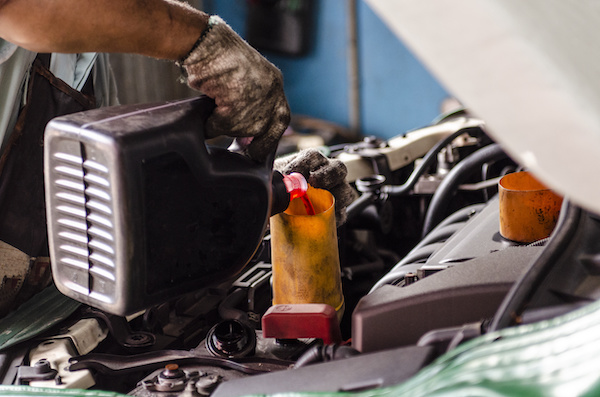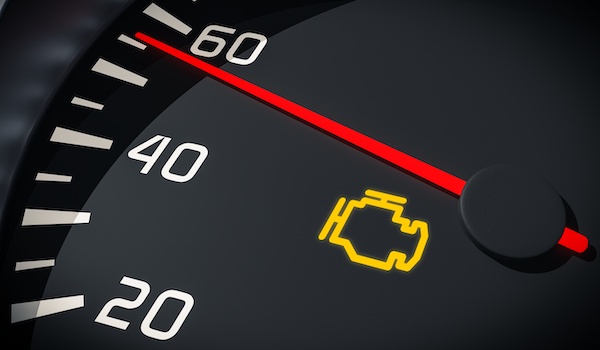Posted on 10/31/2022

When it comes to car maintenance, many things need to be done regularly to keep your car running smoothly. But what fluids specifically need to be changed? Depending on the make and model, several different fluids must be changed in a car. Transmission fluid, brake fluid, power steering fluid, engine oil, and antifreeze are all fluids that might need to be changed regularly. So, why are these exchanges/flushes important? And what can happen if these services aren't performed? Let's find out! Engine Oil It's essential to keep your engine well-lubricated, and that's where engine oil comes in. Engine oil circulates through the engine, removing heat and preventing corrosion. Most carmakers recommend changing your engine oil every 7,500 miles or every six months, whichever comes first. But if you drive in a particularly dusty or dirty environment, you may need to change it more often. Going too long without an oil change could result in you losing your car. Motor oil stop ... read more
Posted on 9/29/2022

The serpentine belt, also known as the fan belt or accessory belt, is a long, snake-like belt that runs through various parts of your automobile. It is made of a thin piece of rubber, and it is responsible for transferring power to your power steering pump, alternator, A/C compressor, and many more vital automobile components. How To Tell When the Serpentine Belt Is Failing Similar to the other belts in your vehicle, you can look for physical signs of a failing belt. Since the belt is made of rubber, it is susceptible to glazing, fraying, and cracking when it is old. Additionally, it may cause some of your vehicle’s vital components (mentioned above) to fail. If your A/C has stopped working recently, don’t let it slip past you that it could be related to the serpentine belt. Another example would be a loss in power steering. If you notice that it takes a lot of energy to turn your wheel, please have this checked out. If your vehicle engine has o ... read more
Posted on 8/30/2022
.jpeg)
Your car's engine starts through fuel and air combustion inside the cylinder. Most modern vehicles have at least four cylinders to keep running even when one fails. However, not at its full potential. This failure may cause an engine to misfire. What's A Misfire? A spark must trigger the combustion of fuel and air compressed inside the cylinder in the correct order. If this sequence fails or any element is missing, the burning reaction will not occur. This combustion failure is called a misfire. The engine cylinders must fire in a precise sequence. Otherwise, it remains unfired. Generally, a misfire is incomplete combustion inside the cylinders. It can happen during startup or when the engine is idling. While most misfires dissipate and your engine may regain full power, it usually signals an underlying problem. Multiple misfires put your engine's components under mechanical strain and may cause bigger issues if unchecked. However, when your car misfires, the check engi ... read more
Posted on 7/29/2022

Drivers should always pay attention to their vehicles when driving. They should especially pay attention to how their car reacts when they step on the brake pedals. If you brake and your car starts vibrating, it signifies a more significant issue. Vibrating brakes or brake shudder occurs when there are problems with the braking system, and you should fix the problem immediately. How Does Brake Shudder Happen? Brake shudder is an effect you feel in the brake pedals, steering wheel, or suspension when you step on the brakes when driving at high speed. The shuddering will range from mild to violent, depending on the state of the braking system. The source of the shudder will give you a clue where the problem lies. When you feel brake shudders in the steering wheel, it is probably an issue with the front rotors. When you feel the shudders in the brake pedal, the rear brake rotors are often a problem. Causes of Brake Shudder The following are issues that could cause your car to vibrate ... read more
Posted on 6/30/2022

The check engine light is one message that most drivers can’t miss. This dashboard warning light is a yellow or orange symbol that looks like an engine block. You are almost always at a disadvantage because it can come on for many reasons. Without the right scan tools or expertise, it is difficult to diagnose it at home. When this light comes on, you should know that it is typically a problem related to the engine or combustion process. It can be a minor problem, like a loose gas cap, or a more concerning one, like a clogged and overheating catalytic converter. Moreover, it can be a sensor issue. The nature of the problem is encoded in the onboard computer system of your vehicle. At Crossroad Tire Services, LLC, we can accurately pinpoint the problem with our state-of-the-art scan tools. Here are some of the most explanations for an illuminated check engine light: Loose or damaged gas cap Faulty Oxygen sensor Failure of mass airflow sensor Worn spark plug or ... read more